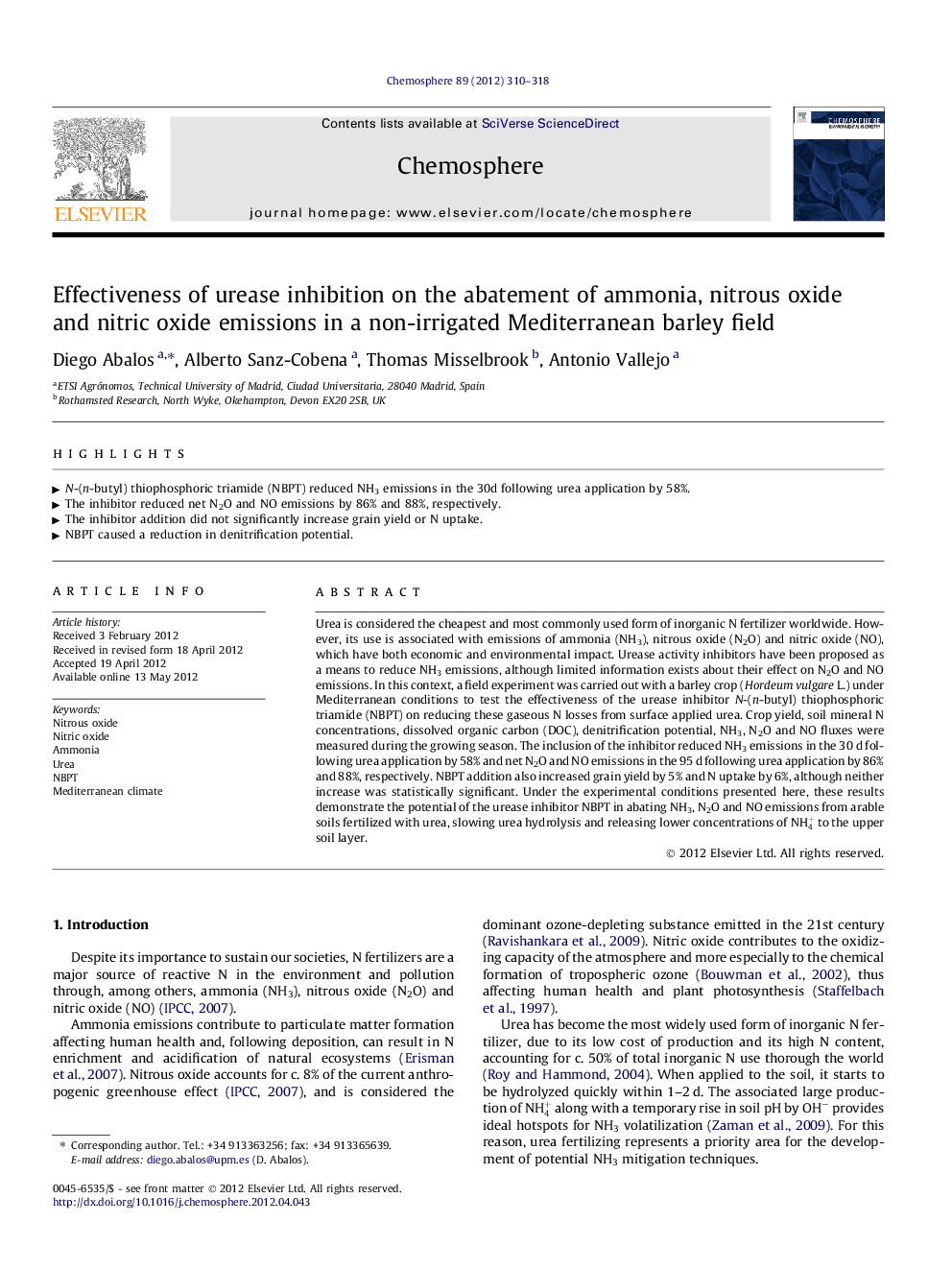| کد مقاله | کد نشریه | سال انتشار | مقاله انگلیسی | نسخه تمام متن |
|---|---|---|---|---|
| 4410200 | 1307533 | 2012 | 9 صفحه PDF | دانلود رایگان |

Urea is considered the cheapest and most commonly used form of inorganic N fertilizer worldwide. However, its use is associated with emissions of ammonia (NH3), nitrous oxide (N2O) and nitric oxide (NO), which have both economic and environmental impact. Urease activity inhibitors have been proposed as a means to reduce NH3 emissions, although limited information exists about their effect on N2O and NO emissions. In this context, a field experiment was carried out with a barley crop (Hordeum vulgare L.) under Mediterranean conditions to test the effectiveness of the urease inhibitor N-(n-butyl) thiophosphoric triamide (NBPT) on reducing these gaseous N losses from surface applied urea. Crop yield, soil mineral N concentrations, dissolved organic carbon (DOC), denitrification potential, NH3, N2O and NO fluxes were measured during the growing season. The inclusion of the inhibitor reduced NH3 emissions in the 30 d following urea application by 58% and net N2O and NO emissions in the 95 d following urea application by 86% and 88%, respectively. NBPT addition also increased grain yield by 5% and N uptake by 6%, although neither increase was statistically significant. Under the experimental conditions presented here, these results demonstrate the potential of the urease inhibitor NBPT in abating NH3, N2O and NO emissions from arable soils fertilized with urea, slowing urea hydrolysis and releasing lower concentrations of NH4+ to the upper soil layer.
► N-(n-butyl) thiophosphoric triamide (NBPT) reduced NH3 emissions in the 30d following urea application by 58%.
► The inhibitor reduced net N2O and NO emissions by 86% and 88%, respectively.
► The inhibitor addition did not significantly increase grain yield or N uptake.
► NBPT caused a reduction in denitrification potential.
Journal: Chemosphere - Volume 89, Issue 3, September 2012, Pages 310–318